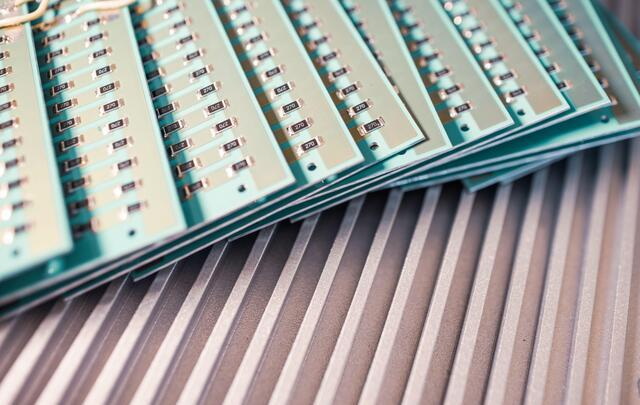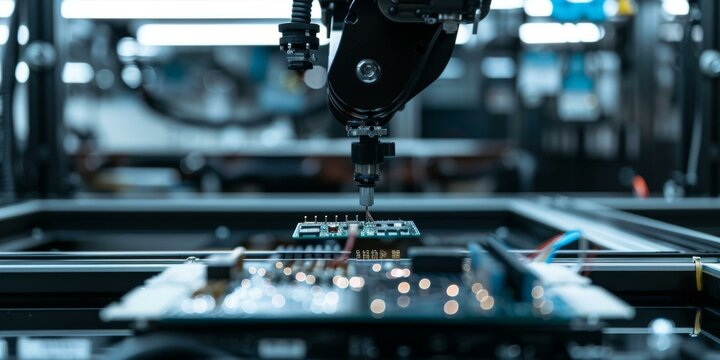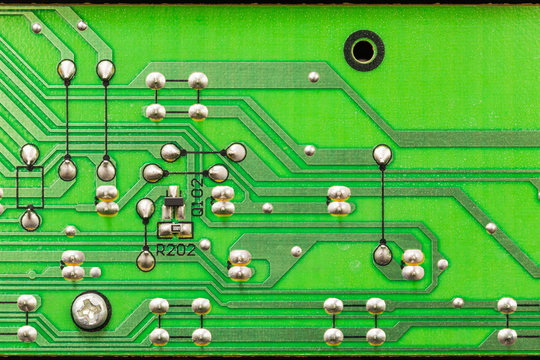Content Menu
● Introduction
● Common Challenges in SMT Line Assembly
>> Soldering Issues
>> Component Placement Accuracy
>> Inspection and Testing Challenges
>> Equipment and Process Calibration
>> Environmental and Material Factors
>> Workflow Efficiency
>> Supply Chain Challenges
● Solutions to Overcome SMT Challenges
● Conclusion
● FAQ
>> 1. What is solder bridging, and how can it be prevented?
>> 2. Why is component placement accuracy important in SMT assembly?
>> 3. What are common inspection challenges in SMT assembly?
>> 4. How does equipment calibration affect SMT assembly?
>> 5. What environmental factors impact SMT assembly?
Introduction
Surface Mount Technology (SMT) line assembly plays a pivotal role in the realm of electronic manufacturing, facilitating the efficient and compact placement of components on printed circuit boards (PCBs). This technology has revolutionized the industry by allowing for higher density and more complex electronic designs. However, despite its advantages, SMT line assembly is not without its challenges. These challenges can significantly impact production quality, efficiency, and overall reliability of electronic products. This article delves into the common challenges faced in SMT line assembly and offers insights into potential solutions to enhance manufacturing processes.

Common Challenges in SMT Line Assembly
Soldering Issues
Soldering is a critical step in the SMT assembly process, yet it often presents numerous challenges. Common soldering issues include:
- Solder Bridging: This occurs when excess solder creates unintended connections between adjacent pads, leading to electrical shorts. Solder bridging can arise from improper stencil design or excessive solder paste application during printing.
- Insufficient Solder: This problem manifests when there is not enough solder on a joint, resulting in weak connections or open circuits. Insufficient solder can be caused by clogged stencil apertures or improper solder paste application.
- Cold Joints: Cold joints are formed when solder does not melt properly during the reflow process, leading to weak or unreliable connections. Factors contributing to cold joints include inadequate heating profiles and poor thermal contact.
- Solder Voids: Voids occur when there are air pockets trapped within the solder joint. These can weaken the connection and lead to reliability issues over time. Voids can result from improper reflow profiles or insufficient wetting of the materials.
Component Placement Accuracy
Accurate component placement is essential for the functionality of PCBs. Misalignment can lead to several issues:
- Electrical Failures: Components that are not placed correctly may fail to make proper electrical connections, resulting in circuit malfunctions.
- Reduced Performance: Misaligned components can disrupt signal integrity and power distribution across the PCB, leading to decreased performance.
- Increased Rework Costs: Incorrectly placed components often require rework, which adds time and cost to the manufacturing process.
- Incompatibility with Automated Testing: If components are misaligned, they may not be accessible for automated testing processes, complicating quality assurance efforts.
Inspection and Testing Challenges
The complexity of SMT circuits poses significant challenges for inspection and testing:
- Hidden Defects: Many defects are not visible on the surface or are located beneath components, making them hard to detect using standard inspection techniques.
- Limited Accessibility: The close proximity of components on SMT boards can hinder access for inspection tools, complicating quality assurance efforts.
- Testing Interference: Components placed too close together can obstruct test probes from reaching critical test points on the PCB.
- False Positives/Negatives: Automated inspection systems may sometimes misidentify defects due to variations in lighting or component characteristics, leading to false positives or negatives that complicate quality control processes.
Equipment and Process Calibration
Improper calibration of SMT equipment can lead to significant production issues:
- Inconsistent Results: Machines that are not properly calibrated may produce inconsistent soldering results and component placements, leading to defects.
- Increased Downtime: Frequent equipment malfunctions due to poor calibration can result in increased downtime and reduced production efficiency.
- Quality Control Issues: Inadequate calibration may lead to undetected defects slipping through quality control checks, impacting product reliability.
- Calibration Drift Over Time: Equipment may drift from its calibrated settings over time due to wear and tear or environmental changes, necessitating regular checks and adjustments.

Environmental and Material Factors
Environmental conditions and material quality have a profound impact on SMT assembly:
- Moisture Sensitivity: Moisture absorption by solder paste can lead to defects such as solder balling or voids in solder joints during reflow. Components may also be sensitive to humidity levels, affecting their performance.
- Temperature Variations: Fluctuations in temperature during the assembly process can cause thermal stress on components, affecting their performance and longevity. Maintaining consistent thermal profiles during reflow is essential for optimal results.
- Material Quality: The quality of materials used, including solder paste and PCB substrates, directly influences the reliability of solder joints and overall assembly quality. Using subpar materials can lead to increased defect rates and reduced product lifespan.
Workflow Efficiency
The efficiency of the workflow within an SMT line assembly is crucial for meeting production targets:
- Bottlenecks in Production: Identifying bottlenecks where processes slow down can help streamline operations. For instance, if one machine is slower than others, it can create delays throughout the entire line.
- Operator Training: Ensuring that operators are well-trained in both equipment operation and troubleshooting can reduce errors and improve overall efficiency. Continuous training programs should be implemented as technology evolves.
- Integration of Automation: Employing automation technologies such as robotic arms for component placement or automated guided vehicles (AGVs) for material handling can enhance efficiency by reducing manual labor requirements and speeding up production times.
Supply Chain Challenges
The supply chain plays a significant role in SMT line assembly:
- Material Shortages: Fluctuations in supply availability can lead to delays in production schedules. Manufacturers must maintain good relationships with suppliers to ensure timely delivery of critical components.
- Quality Control from Suppliers: Ensuring that suppliers provide high-quality materials is essential. Inconsistent material quality from suppliers can lead to defects down the line that affect overall product reliability.
Solutions to Overcome SMT Challenges
To effectively address these challenges, manufacturers can implement several best practices:
- Use High-Quality Materials: Utilizing high-quality solder paste that is stored under optimal conditions can mitigate many soldering issues. Proper storage prevents moisture absorption and maintains paste consistency.
- Regular Calibration and Maintenance: Establishing a routine for calibrating and maintaining SMT equipment ensures consistent performance and reduces defects related to machine inaccuracies. Implementing predictive maintenance strategies can help identify potential issues before they cause downtime.
- Advanced Inspection Techniques: Implementing technologies such as Automated Optical Inspection (AOI) and X-ray inspection enhances defect detection capabilities, allowing for better quality control throughout the assembly process. These technologies provide real-time feedback on production quality, enabling quick adjustments as needed.
- Staff Training: Providing comprehensive training for staff on handling components and following standardized procedures helps minimize errors during assembly. Training should also cover troubleshooting techniques so operators can quickly address issues that arise during production.
- Optimize Environmental Conditions: Maintaining controlled environments with regulated humidity and temperature levels can significantly reduce the impact of external factors on the assembly process. Investing in climate control systems ensures that materials remain in optimal condition throughout production.
- Implement Lean Manufacturing Principles: Adopting lean manufacturing principles helps identify wasteful practices within the assembly process. Streamlining workflows by eliminating unnecessary steps improves overall efficiency while reducing costs.
Conclusion
Addressing the common challenges in SMT line assembly is crucial for achieving high-quality electronic manufacturing. By understanding these issues—ranging from soldering problems to equipment calibration—and implementing practical solutions, manufacturers can enhance their production processes. Continuous improvement efforts will lead to increased efficiency, reduced costs, and ultimately higher reliability of electronic products in a competitive market. Embracing technological advancements while fostering a culture of quality will ensure sustained success in SMT line assembly operations moving forward.

FAQ
1. What is solder bridging, and how can it be prevented?
Solder bridging occurs when excess solder creates a connection between two adjacent pads, causing a short circuit. It can be prevented by using the correct amount of solder paste during printing and ensuring proper stencil design that aligns with PCB pad configurations.
2. Why is component placement accuracy important in SMT assembly?
Accurate placement ensures that components function as intended without electrical failures. Misalignment can disrupt signal integrity and lead to performance issues within the circuit board.
3. What are common inspection challenges in SMT assembly?
Common challenges include detecting hidden defects that are not visible on the surface as well as limited accessibility due to closely packed components. Advanced inspection methods like AOI and X-ray inspection help overcome these difficulties by enhancing defect detection capabilities.
4. How does equipment calibration affect SMT assembly?
Improper calibration can result in inconsistent soldering results and inaccurate component placements, leading to defects in production. Regular maintenance and calibration are essential for ensuring reliable performance of SMT machinery.
5. What environmental factors impact SMT assembly?
Moisture levels, temperature fluctuations, and material quality are critical environmental factors affecting SMT assembly. For instance, moisture can cause solder balling while temperature variations may induce thermal stress on components during reflow processes.




















